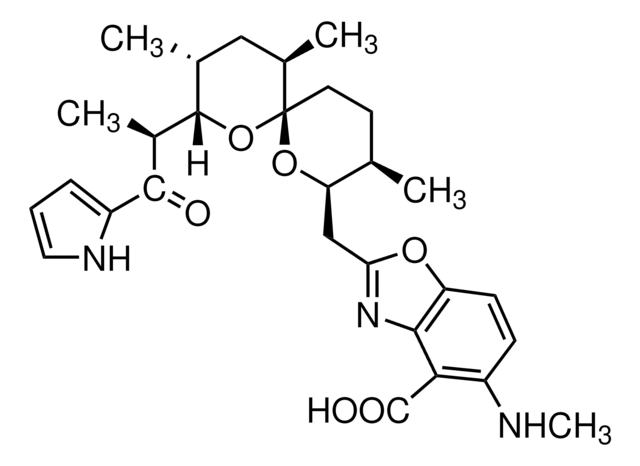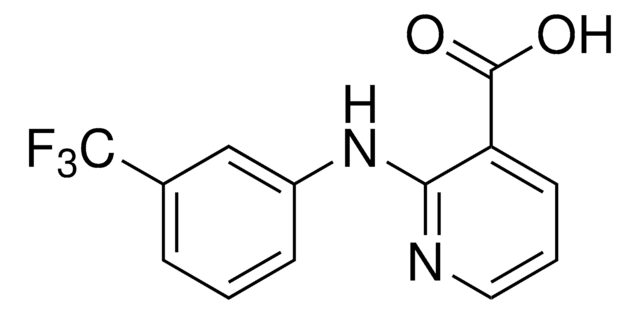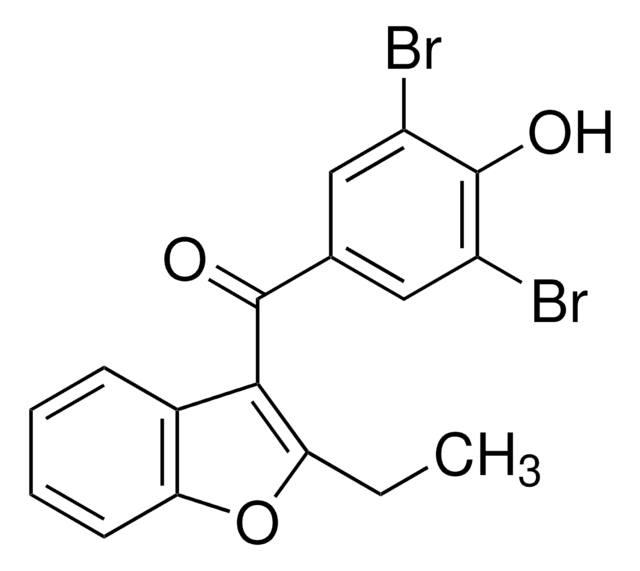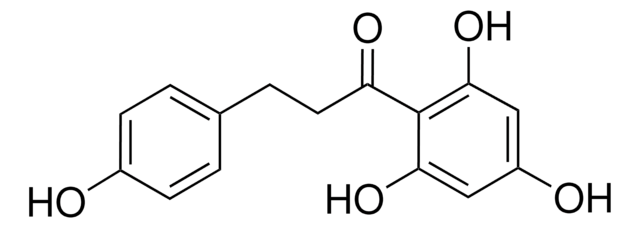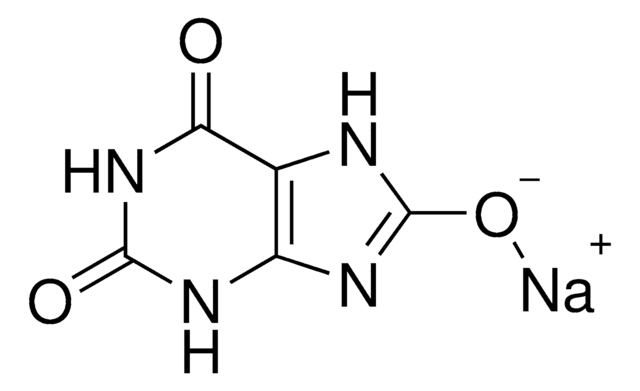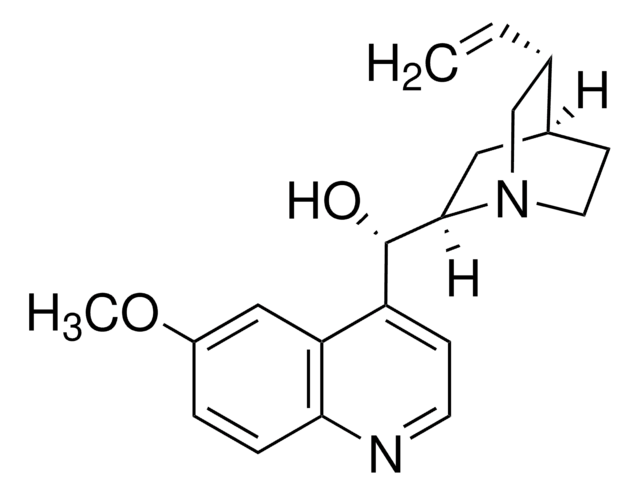B5774
Benzbromarone
analytical standard
Synonym(s):
3-(3,5-Dibromo-4-hydroxybenzoyl)-2-ethylbenzofuran
About This Item
Recommended Products
grade
analytical standard
Quality Level
assay
~95%
technique(s)
HPLC: suitable
gas chromatography (GC): suitable
application(s)
forensics and toxicology
pharmaceutical (small molecule)
veterinary
format
neat
storage temp.
2-8°C
SMILES string
CCc1oc2ccccc2c1C(=O)c3cc(Br)c(O)c(Br)c3
InChI
1S/C17H12Br2O3/c1-2-13-15(10-5-3-4-6-14(10)22-13)16(20)9-7-11(18)17(21)12(19)8-9/h3-8,21H,2H2,1H3
InChI key
WHQCHUCQKNIQEC-UHFFFAOYSA-N
Gene Information
human ... CYP2C19(1557) , CYP2C9(1559) , SLC22A12(116085)
Looking for similar products? Visit Product Comparison Guide
Application
signalword
Danger
hcodes
pcodes
Hazard Classifications
Acute Tox. 3 Oral
Storage Class
6.1C - Combustible acute toxic Cat.3 / toxic compounds or compounds which causing chronic effects
wgk_germany
WGK 3
flash_point_f
Not applicable
flash_point_c
Not applicable
ppe
dust mask type N95 (US), Eyeshields, Faceshields, Gloves
Choose from one of the most recent versions:
Certificates of Analysis (COA)
Don't see the Right Version?
If you require a particular version, you can look up a specific certificate by the Lot or Batch number.
Already Own This Product?
Find documentation for the products that you have recently purchased in the Document Library.
Customers Also Viewed
Our team of scientists has experience in all areas of research including Life Science, Material Science, Chemical Synthesis, Chromatography, Analytical and many others.
Contact Technical Service
